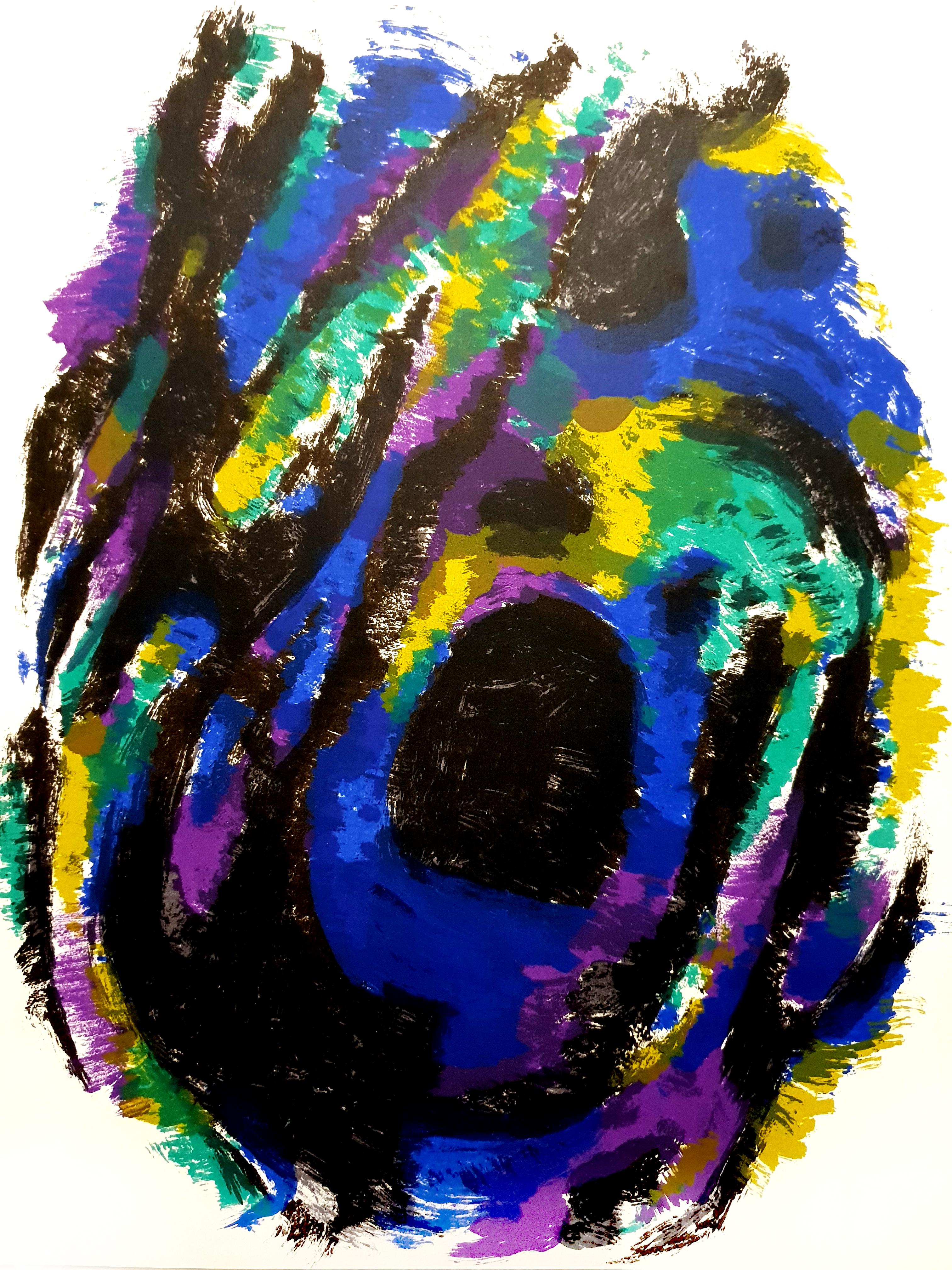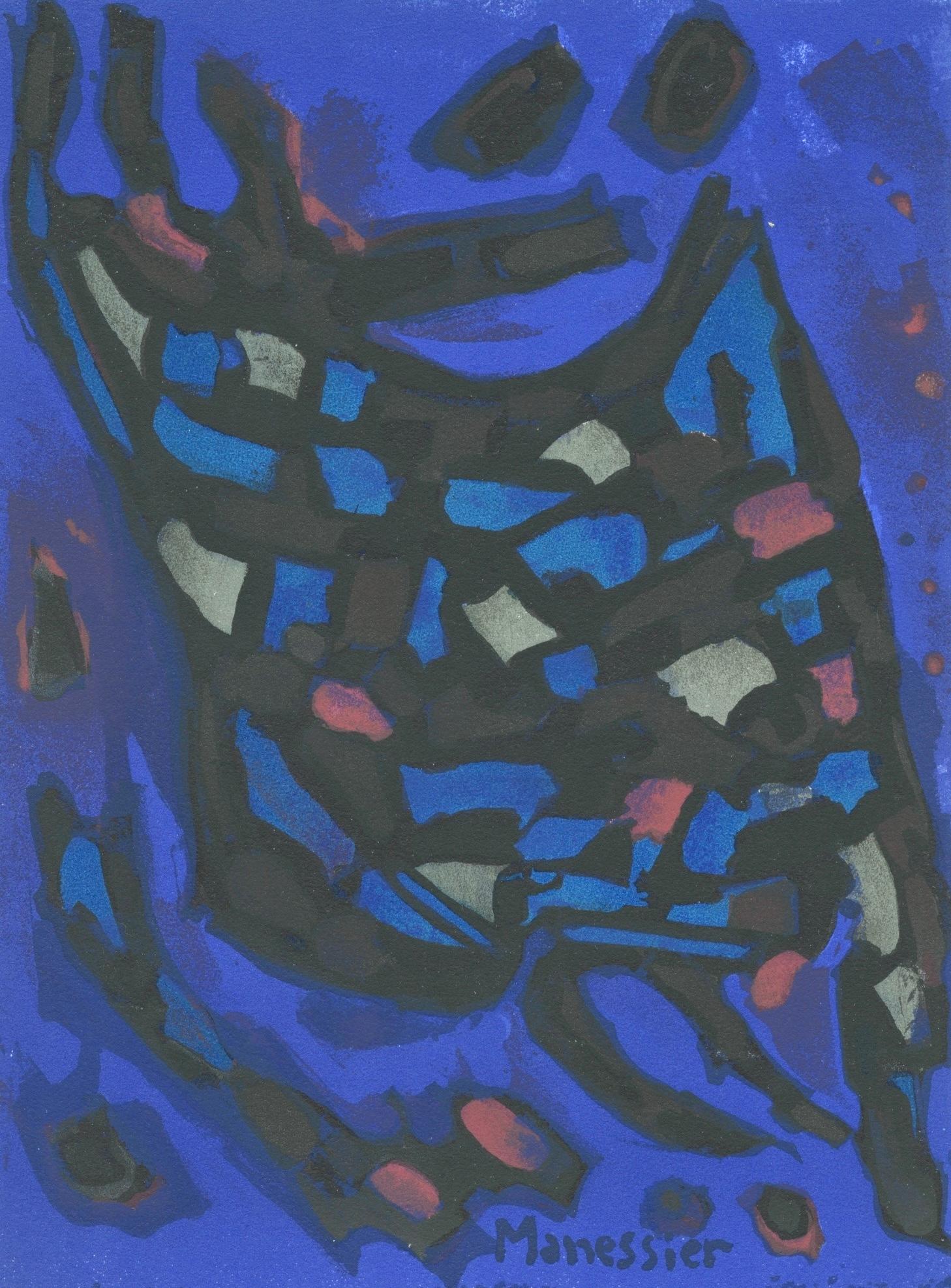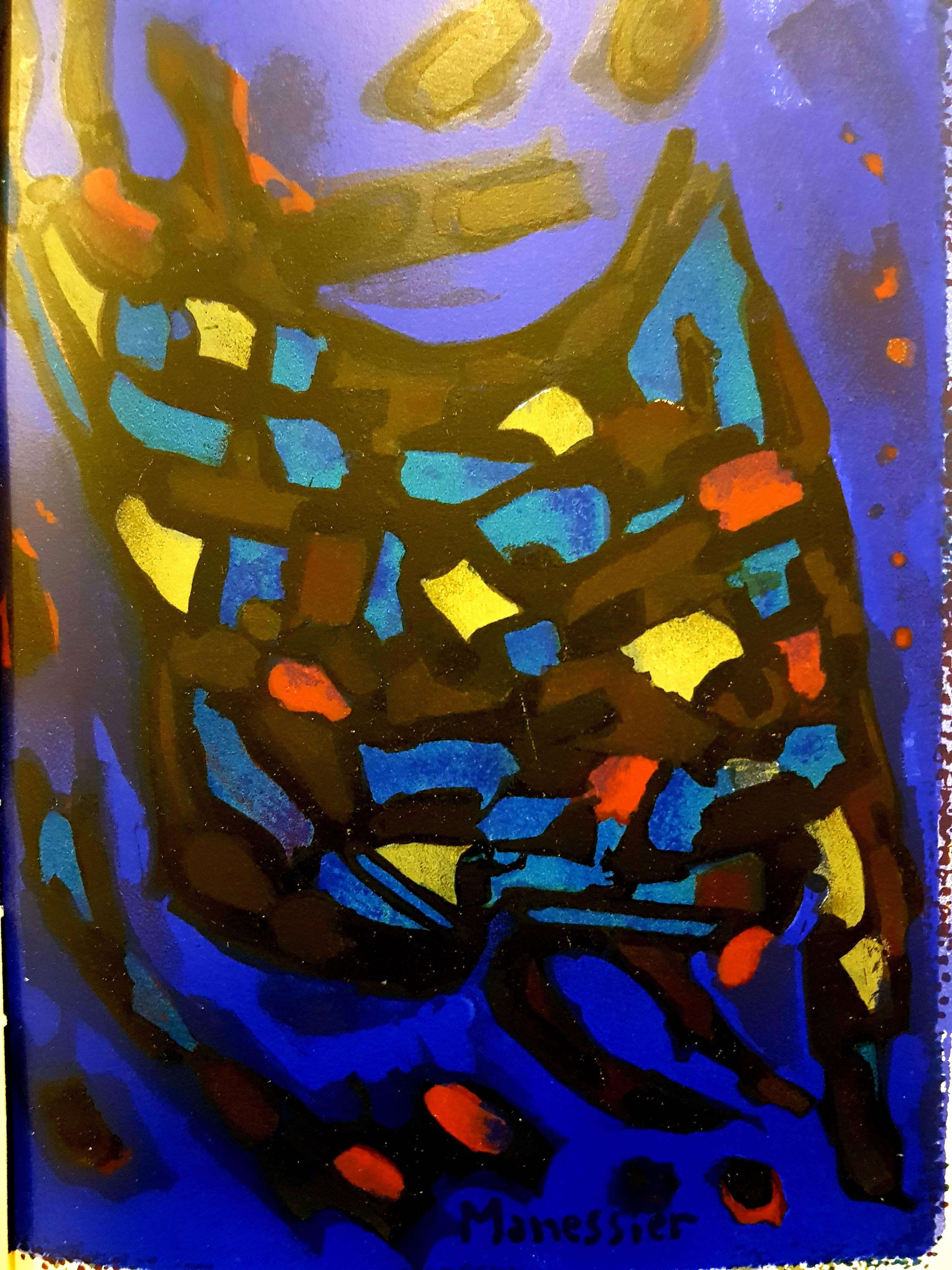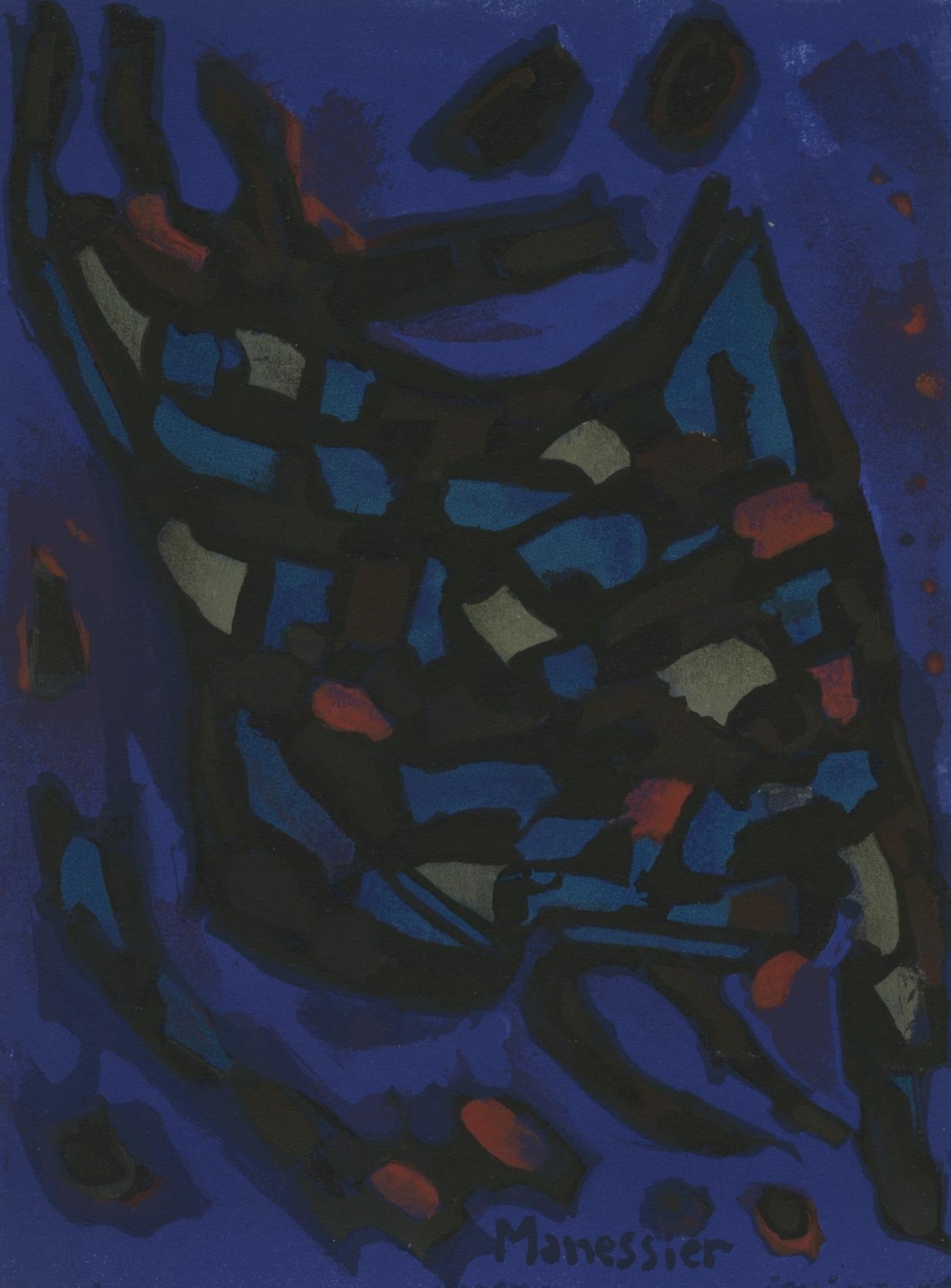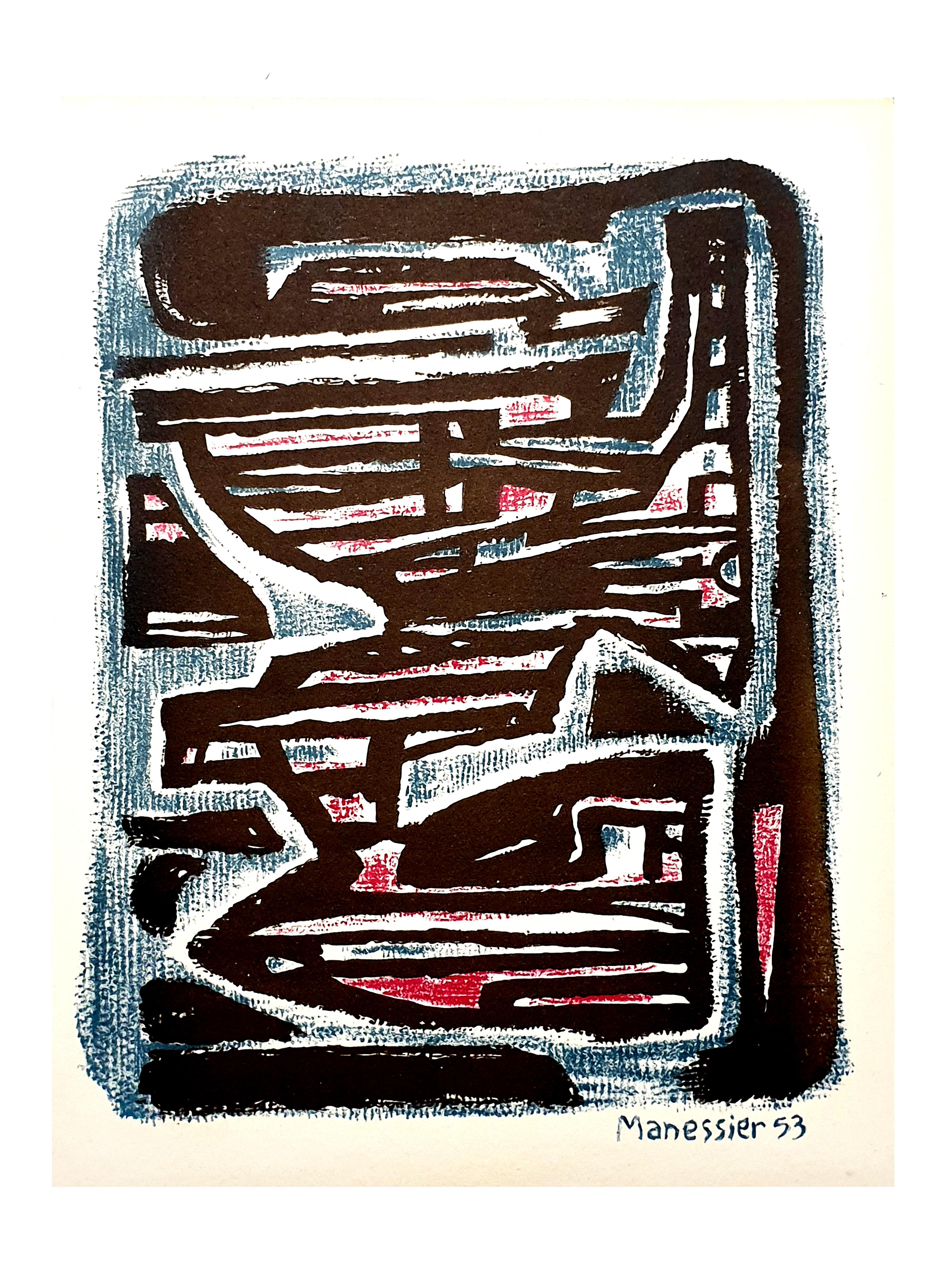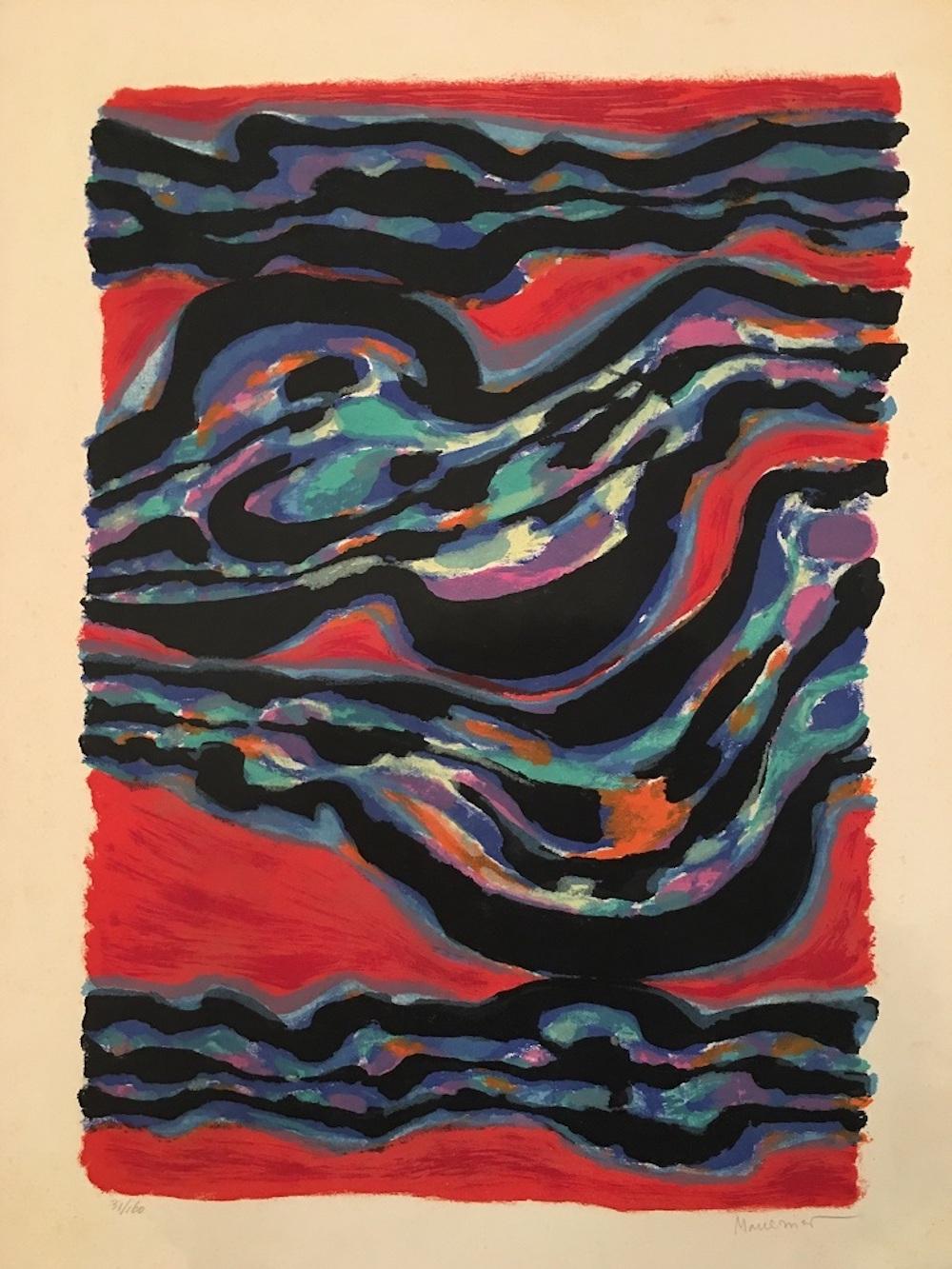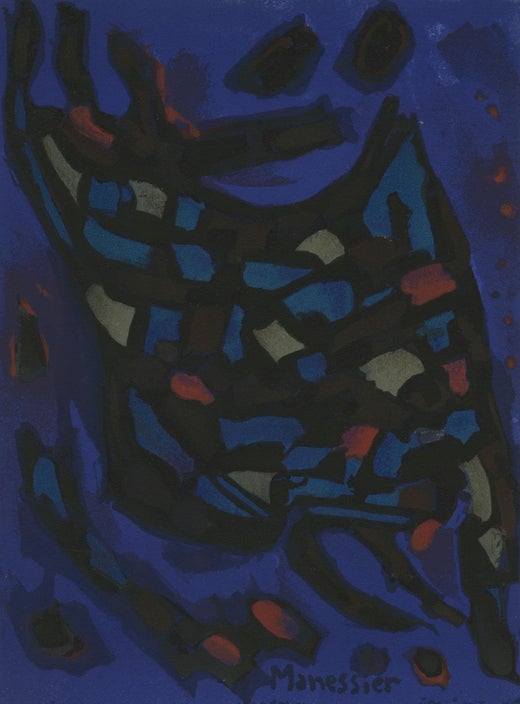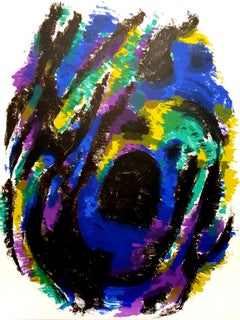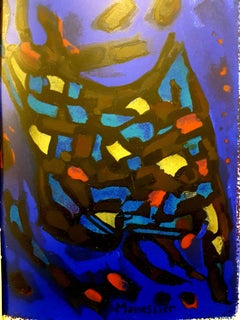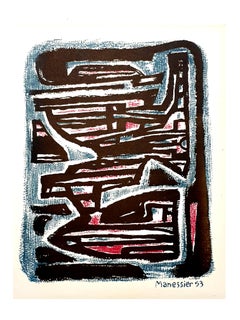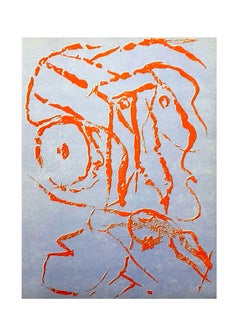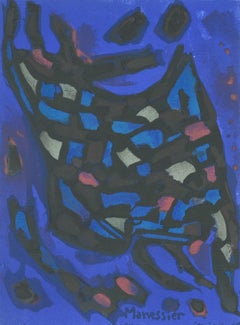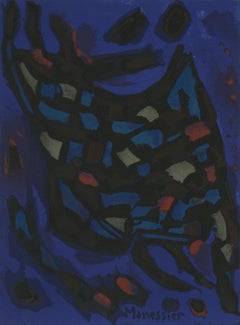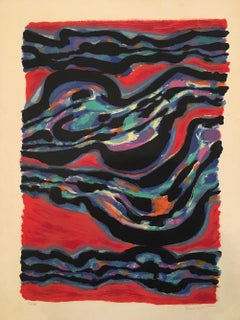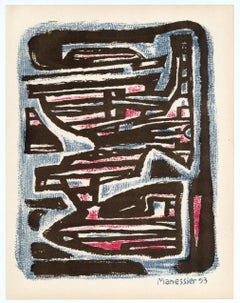Items Similar to Alfred Manessier - Lithograph
Want more images or videos?
Request additional images or videos from the seller
1 of 6
Alfred ManessierAlfred Manessier - Lithograph1962
1962
$1,301.44
£988.72
€1,100
CA$1,828.72
A$2,008.30
CHF 1,033.80
MX$24,029.87
NOK 13,162.49
SEK 12,335.21
DKK 8,379.55
About the Item
Alfred Manessier - Lithograph
1962
From the art periodical XXe Siecle (no. 20)
Dimensions: 32 x 24
Edition: G. di San Lazzaro.
Unsigned and unnumbered as issued
- Creator:Alfred Manessier (1911 - 1993, French)
- Creation Year:1962
- Dimensions:Height: 12.6 in (32 cm)Width: 9.45 in (24 cm)Depth: 0.04 in (1 mm)
- Medium:
- Movement & Style:
- Period:
- Condition:
- Gallery Location:Collonge Bellerive, Geneve, CH
- Reference Number:1stDibs: LU16123767261
Alfred Manessier
Alfred Manessier was born on 5 December 1911 in Saint-Ouen in the Somme. Trained at the Ecole des Beaux-Arts in Amiens (1924 - 1929), he completed his training at the Ecole des Beaux-Arts in Paris and spent a brief period in the studio of the painter Roger Bissière, who introduced him to frescoes and to whom he took refuge in Boissiérettes in the Lot at the beginning of the war. From 1947 onwards, stained glass occupied a large part of his work, which was now based on abstraction. He carried out about twenty projects in France, including the stained glass windows for the church of Saint-Michel des Bréseux (Doubs), his first commission (1948 - 1950), those in the church of Saint-Pierre de Trinquetaille in Arles (1953), and the chapel of Sainte-Thérèse de l'Enfant Jésus et de la Sainte Face in Hem (Nord - 1957). The stained glass windows of the Church of the Holy Sepulchre in Abbeville, one of his last commissions carried out between 1982 and 1993, are considered his masterpiece. He also executed a dozen stained glass projects in Switzerland, Germany and Spain. As an abstract painter of the Ecole de Paris, Manessier frequently tackled subjects related to the Catholic religion. His paintings are often inspired by the landscapes of Northern France, but also by his travels. From 1956 onwards, he produced a large number of political paintings entitled "Hommage", which echoed the violence in the world. The dissemination of his artworks in the public space through these stained glass windows gave him great notoriety during his lifetime, and his paintings were awarded numerous international prizes (such as the Grand Prix of the Venice Biennale, which he received in 1962, alongside Albert Giacometti, who received the Grand Prix for sculpture). He died on 1er August 1993 as a result of a car accident, shortly after the completion of the stained glass windows in Abbeville.
About the Seller
4.9
Gold Seller
Premium sellers maintaining a 4.3+ rating and 24-hour response times
Established in 2015
1stDibs seller since 2015
967 sales on 1stDibs
Typical response time: 1 hour
- ShippingRetrieving quote...Shipping from: Collonge Bellerive, Geneve, Switzerland
- Return Policy
More From This Seller
View AllAlfred Manessier - Original Lithograph
By Alfred Manessier
Located in Collonge Bellerive, Geneve, CH
Alfred Manessier - Original Lithograph
Colorful Abstraction
1962
From XXe Siecle
Dimensions: 32 x 24
Edition: G. di San Lazzaro.
Unsigned and unumbered as issued
Category
1960s Modern Figurative Prints
Materials
Lithograph
Alfred Manessier - Abstract Blue Composition - Original Lithograph
By Alfred Manessier
Located in Collonge Bellerive, Geneve, CH
Alfred Manessier - Abstract Blue Composition - Original Lithograph
1964
Dimensions: 30 x 20 cm
Edition of 200 (one of the 200 on Vélin de Rives)
Mourl...
Category
1960s Modern Abstract Prints
Materials
Lithograph
Alfred Manessier - Maze - Original Lithograph
By Alfred Manessier
Located in Collonge Bellerive, Geneve, CH
Alfred Manessier - Maze - Lithograph
Colorful Abstraction
1954
XXe Siecle (No. 4)
Published in Paris by San Lazzaro
Dimensions: 32 x 24
Edition: G. di San Lazzaro.
Signed in the plat...
Category
1950s Modern Abstract Prints
Materials
Lithograph
Pierre Alechinsky - Composition - Original Lithograph
Located in Collonge Bellerive, Geneve, CH
Pierre Alechinsky - Composition - Original Lithograph
From the literary review "XXe Siècle"
1960
Dimensions: 32 x 24 cm
Publisher: G. di San Lazzaro.
Unsigned and unumbered as issued
Category
1960s Abstract Abstract Prints
Materials
Lithograph
Maurice Estève - Composition - Original Lithograph
By Maurice Estève
Located in Collonge Bellerive, Geneve, CH
Maurice Estève - Composition
Original Lithograph
1964
Dimensions: 32 x 24 cm
Revue Art de France
French painter born in Culan, Cher. He went to Paris in 1919 in the face of opposi...
Category
1960s Abstract Expressionist Abstract Prints
Materials
Lithograph
Maurice Estève - Composition - Original Lithograph
By Maurice Estève
Located in Collonge Bellerive, Geneve, CH
Maurice Estève - Composition - Original Lithograph
Colorful Abstraction
1969
From the art review XXe Siecle
Dimensions: 32 x 24 inches
Edition: G. di Sa...
Category
1960s Modern Figurative Prints
Materials
Lithograph
You May Also Like
Alfred Manessier, Untitled, from Prints from the Mourlot Press, 1964
By Alfred Manessier
Located in Southampton, NY
This exquisite lithograph by Alfred Manessier (1911–1993), titled Sans titre (Untitled), from the album Prints from the Mourlot Press, exhibition sponsored by the French Embassy, cir...
Category
1960s Modern Abstract Prints
Materials
Lithograph
$716 Sale Price
20% Off
Free Shipping
original lithograph
By Alfred Manessier
Located in Henderson, NV
Medium: original lithograph. Printed in Paris in 1964 by Mourlot Freres and issued in an edition of 2000 on Arches wove paper. Size: 10 x 7 1/2 inches (255 x 185 mm). Signed in the p...
Category
1960s Prints and Multiples
Materials
Lithograph
Collines - Original Lithograph y A. Manessier - 1960
By Alfred Manessier
Located in Roma, IT
Collines is an abstract color lithograph realized by Alfred Manessier in 1960.
Signed and numbered on plate. Edition 31 of 160 prints.
Publication: L'oeuvre Gravée, Zurich (Paris)....
Category
1960s Abstract Abstract Prints
Materials
Lithograph
original lithograph
By Alfred Manessier
Located in Henderson, NV
Medium: original lithograph. Impression on wove paper, executed for the hard-to-find XXe Siecle (No. 4), published in Paris in 1954 by San Lazzaro. Sheet size 12 3/8 x 9 5/8 inches (...
Category
1950s Figurative Prints
Materials
Lithograph
(tariff free*) Le Nid, Petite tache noire n°1, XXe siècle
By Alfred Manessier
Located in Southampton, NY
Lithograph on vélin paper. Paper Size: 12.4 x 9.65 inches. Inscription: Unsigned and unnumbered, as issued. Notes: From the album, XXe siècle, Nouvelle série, XXIIe Année, N° 15, Noë...
Category
1960s Modern Abstract Prints
Materials
Lithograph
$716 Sale Price
20% Off
Free Shipping
Composition (Mourlot, Paris)
By Alfred Manessier
Located in Kansas City, MO
Alfred Manessier
Composition
1964
Original Color Lithograph on Velin d'Arches
Size: 10x7.375in
Edition: 2,000
Signed in the Stone
Annotated verso
Publisher: Mourlot, Paris
Printer: M...
Category
1960s Modern Prints and Multiples
Materials
Vellum, Lithograph
Price Upon Request
